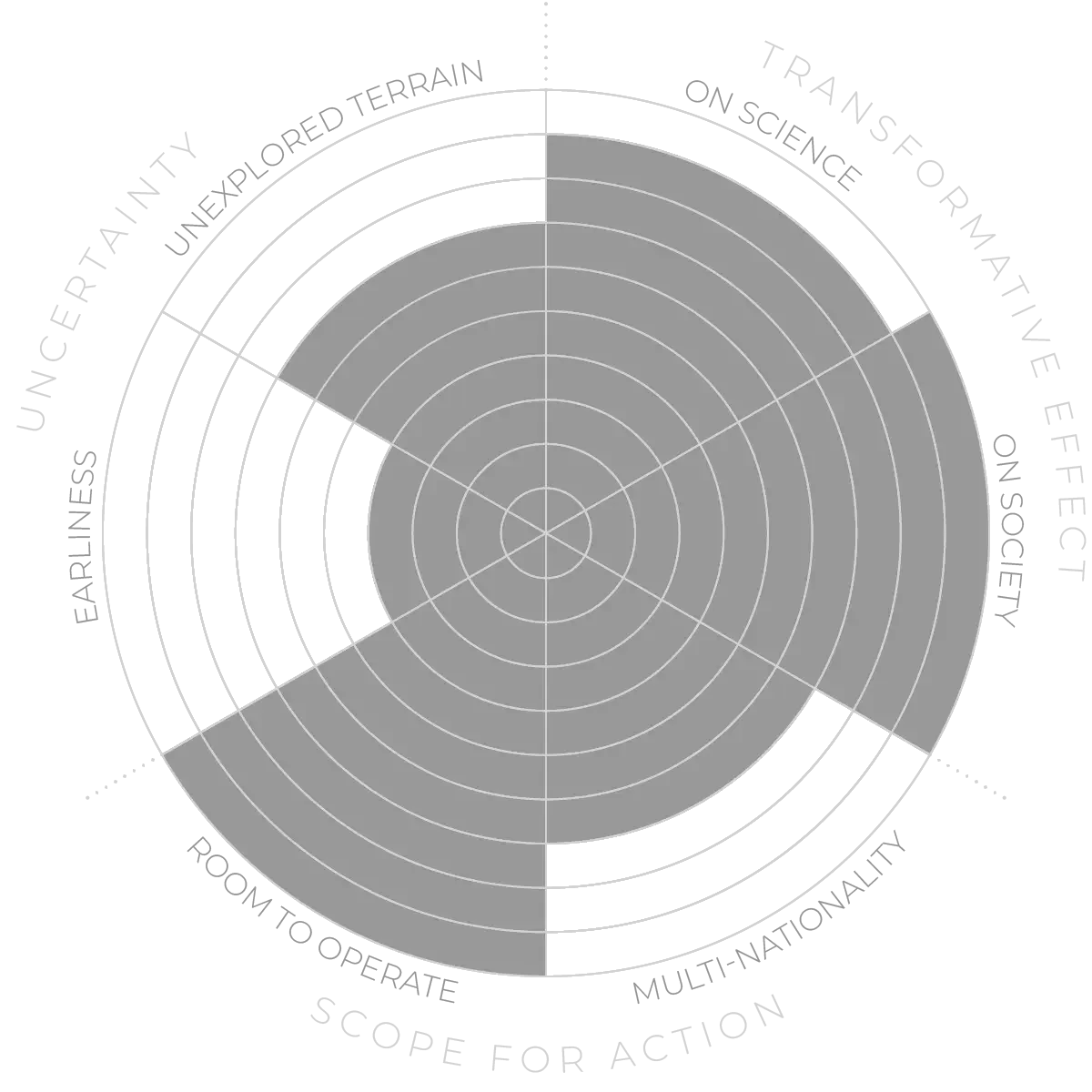Future Horizons:
10-yearhorizon
Control and development of anti-fungals improves
25-yearhorizon
Real-time pandemic prediction and control becomes possible
Mitigation strategies include vaccines and RNA interference (via extracellular vesicles as a promising route),12 new small-molecule drugs and natural compounds that are isolated from bacteria and other sources where anti-fungal strategies have evolved. There is a need to replace broad-spectrum agricultural fungicides that poison the entire kingdom, moving towards a more tailored approach involving targeted fungicides that leave soil-fungal communities intact, lock down carbon and do not cause resistance in clinical anti-fungals. Research into these tailored approaches is ongoing but not yet mature.
More positively, two novel small-molecule anti-fungals — olorofim and fosmanogepix — are now in phase III trials.13 New synthetic chemicals are also being developed, as well as new approaches for delivering them. Manipulating the fungal microbiome or virome may guide their behaviour into being more favourable for us.
Combatting fungal pandemics - Anticipation Scores
The Anticipation Potential of a research field is determined by the capacity for impactful action in the present, considering possible future transformative breakthroughs in a field over a 25-year outlook. A field with a high Anticipation Potential, therefore, combines the potential range of future transformative possibilities engendered by a research area with a wide field of opportunities for action in the present. We asked researchers in the field to anticipate:
- The uncertainty related to future science breakthroughs in the field
- The transformative effect anticipated breakthroughs may have on research and society
- The scope for action in the present in relation to anticipated breakthroughs.
This chart represents a summary of their responses to each of these elements, which when combined, provide the Anticipation Potential for the topic. See methodology for more information.



